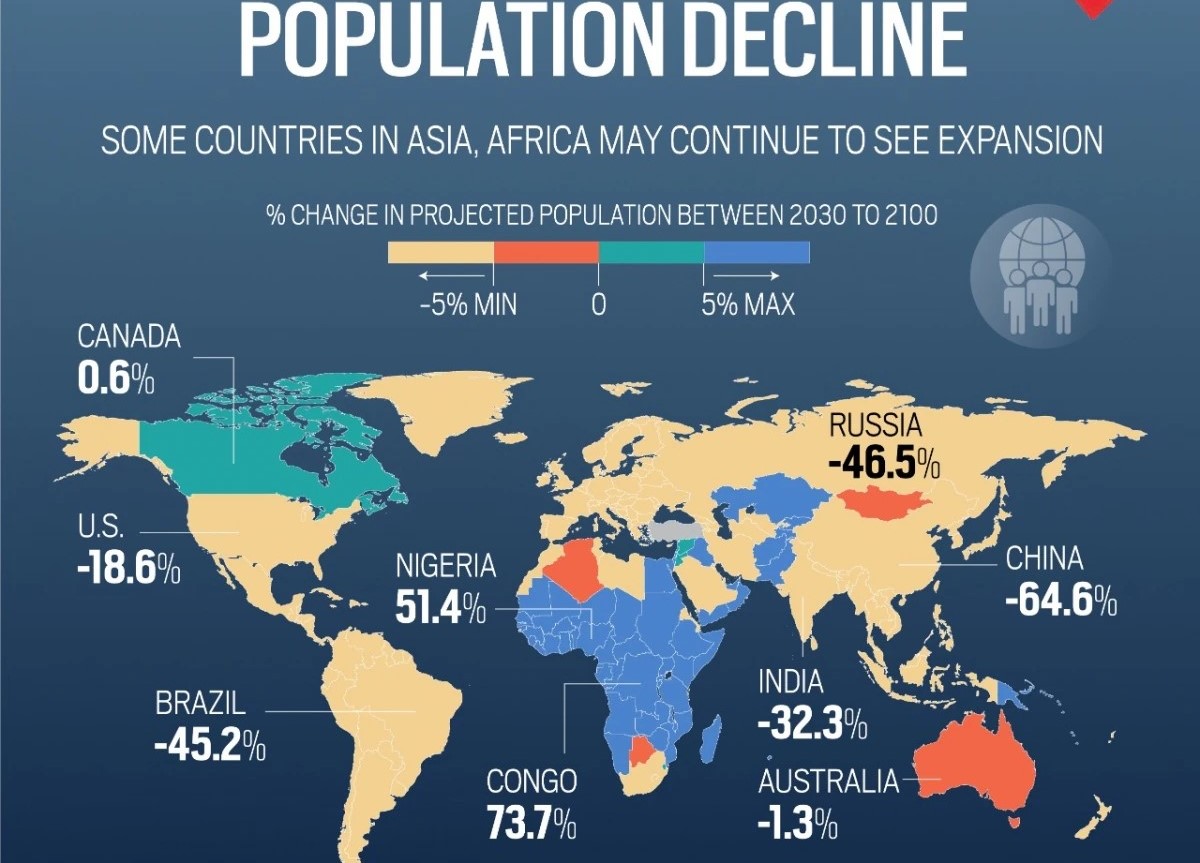(3 Minutes Read)
The latest UN report predicts that the world’s population will peak in the mid-2080s, growing from 8.2 billion in 2024 to around 10.3 billion by the mid-2080s. Interestingly, the population is set to decline to around 10.2 billion by the end of the century.
The latest UN report predicts that the world’s population will peak in the mid-2080s, growing from 8.2 billion in 2024 to around 10.3 billion by the mid-2080s. Interestingly, the population is set to decline to around 10.2 billion by the end of the century.
According to Navid Hanif, Assistant Secretary-General for Economic Development at the UN Department of Economic and Social Affairs (UNDESA), the world’s population in 2100 is expected to be six percent lower, or 700 million lower, than what was predicted ten years ago. This has significant policy implications for the sustainability of planet Earth. This shift has important implications for global policy and the planet’s sustainability.
The Director of the Population Division at UNDESA, John Wilmoth, highlights that although a larger population contributes to a higher environmental impact, it is ultimately human behaviors that have a more significant effect on the environment than the size of the population. The earlier population peak is due to a variety of factors, including declining fertility rates in some of the world’s largest countries, particularly China.
Additionally, the impact of the COVID-19 pandemic has led to a rise in global life expectancy, with the number of people aged 65 or older expected to outnumber children under 18 by 2080. Immigration will also play a significant role in future population growth for some regions. Additionally, women globally are having one fewer child, on average, than they were in 1990.
By 2024, the population will have reached its peak in 63 countries, such as China, Germany, Japan, and Russia, with a projected 14% decline over the next thirty years. In 48 other countries, including Brazil, Iran, Turkey, and Vietnam, the population is expected to peak between 2025 and 2054.
Read Also:
https://trendsnafrica.com/ghanas-population-expected-to-increase-70-36-by-2050/
The remaining 126 countries, like India, Indonesia, Nigeria, Pakistan, and the USA, are anticipated to see population growth until 2054, with some possibly peaking in the latter half of the century





